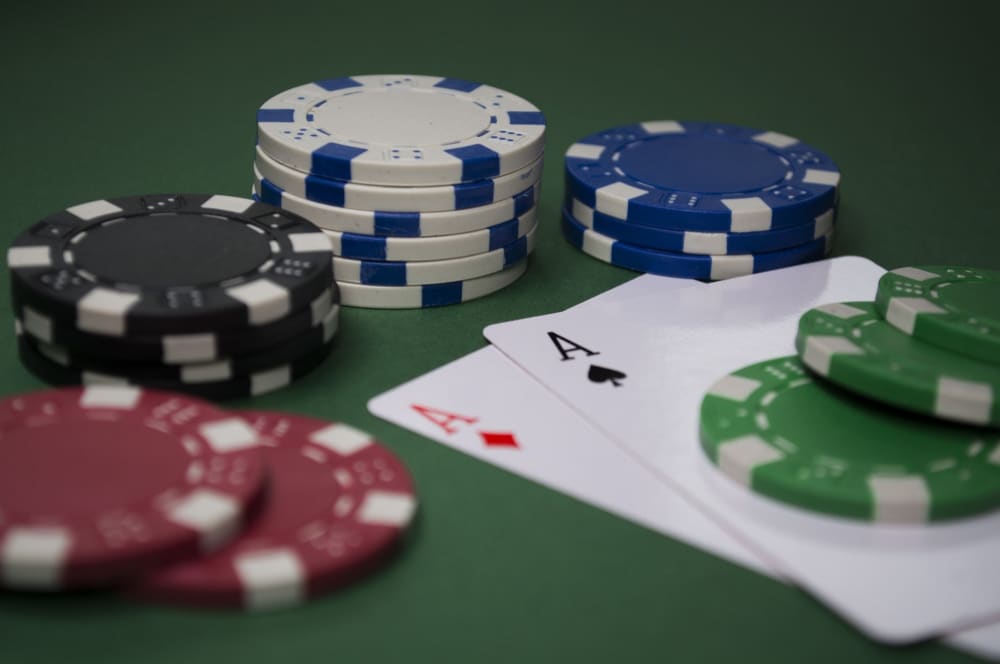5 card draw is one of the most psychologically complex games in all of poker. While it shares many similarities with other forms of poker, such as Texas hold ‘em, it has rules and methods all its own. Winning at this hand takes a cool head and a thorough understanding of probability, psychology, and game strategy. Ready to learn everything you need to win your next game? Read on!
Here’s How It All Began
To understand 5 card draw, first, you have to appreciate how poker, itself, came to be. We’re not exactly sure where poker originated, but we do know that poque, a card game played in France, was brought to New Orleans by French colonists. The game originally featured three cards and involved bluffing, and it quickly caught on on steamboats up and down the Mississippi River. The game has continued to grow and has evolved into a variety of poker families, among them, the 5 card draw.
Today, there are four main types of poker. The first and oldest is called straight and can be very complex. Stud poker is a popular form and includes a combination of rounds that are face-up and face-down, with rounds of betting in between. Draw poker, the family that encompasses 5 card draw includes other pokers games that allow players to exchange bad cards for good cards. Community card poker, which is also known as flop poker, involves face-up community cards that the players can take advantage of. Texas hold ‘em is an extremely popular form of community card poker.
How to Play Poker
First, let’s brush up on our understanding of poker 5 card draw. 5 card draw rules indicate the use of a standard 52-card deck, with aces either low or high. After shuffling, the dealer will hand out five cards to each player, starting on the left, one at a time.
Each player must ante. The ante is the initial wager and is established before the game begins. Other types of poker, such as Texas hold ‘em, require a blind, which is an initial wager from a single person. Once the players have examined their hands, players can decide to check, call, raise, call, or fold. Check can only take place if nobody else has bet. Check is like a “pass” and allows initial players to wait to see how their opponent’s hands stack up.
Call means that the player is matching the initial wager and raise means the player is increasing the initial wager. Fold means that the player has chosen not to bet any further, and is indicated by placing his cards face down on the table.
Once all players have folded, called, or raised, each person now has the option to discard up to four cards and receive as many new cards from the deck. Then, another round of betting takes place, until the pot is satisfied and all cards are now shown.
The Winning Hands
Here, in order from lowest value to highest value, are the scoring hands for 5 card game poker games:
Lone High Card
A long high card is simply that–no flushes, straights, or anything else, just a single high card that you hope might win big. You are definitely not in a strong position with this hand, so proceed with caution!
One Pair
One pair is two cards of the same rank, such as two tens or two queens. Suit doesn’t matter. If two players have pairs, the pair with the highest rank wins.
Two Pair
A two pair is two cards of one rank and two cards of another rank. Again, suit is inconsequential. For example, you might have two tens and two queens. The other three cards are unmatched; this is one of the most common hands.
Three of a Kind
A three of a kind is three cards of the same rank. Three sixes, for example, would be three of a kind. The fourth and fifth cards are unmatched.
Straight
A straight is five cards in numerical sequence. An example hand would be a queen, jack, ten, nine, and eight. Another example would be an ace, two, three, four, and five.
Flush
In a flush, all five cards have the same suit. Sequence is inconsequential.
Full House
A full house is a colorful hand; it’s a pair (two cards of the same rank) and a three of a kind (three cards of the same rank). You might have two queens and three threes, or maybe have two fives and three kings.
Four of a Kind
Four cards of the same rank are four of a kind. The fifth card doesn’t matter but can help break a tie.
Straight Flush
A straight flush combines the features of a straight and a flush; it is five cards of the same suit in sequential order.
Royal Flush
The best possible hand in 5 card game poker games, the royal flush is five cards of the same suit in sequential order, starting with the ace. It goes: ace, king, queen, jack, and ten. If this is the hand you’ve been dealt, it’s time to use it!
No Pair/Highest Number
If you don’t have any pairs or flushes and don’t fold, your highest valued card is your score.
Because hands are scored based on the probability of their occurring, the highest scoring hands are the hands that are least likely to take place.
Etiquette
There are a few basic rules of poker etiquette that will keep you from offending your fellow players and from seeming like a newbie. The first is to not splash the pot. Splashing the pot is when you lazily toss your chips into the center of the table. Doing so mixes your current bet with any previous bets–and with other player’s bets–so it’s impossible to distinguish who is playing what. This makes it almost impossible for the dealer and other players to understand what’s going on. Don’t do it! Instead, place your chips neatly in front of you.
Another important rule revolves around how you show your winning hand. If you’ve been called and you know that you have the winning hand, deliberately waiting to show your hand is called a slow roll. Doing so just isn’t nice manners.
Finally, you should never discuss or react to a hand while the game is still in play. Doing so is a major tell, and it’s another example of bad poker etiquette. Keep your conversation to yourself!
Chip Value
Let’s take a minute to talk chip value! This is an important lesson to learn if you want to make sure your betting game is on point. There are two main sets of chip values or denominations, though this can vary from region to region or by game, so double check before you sit down to play.
Basic poker chips come in five colors. White is typically $1 or unit, red is $5, blue is $10, green is $25, and black is $100. Full poker chip colors utilize thirteen different colors. White is still $1 or 1 unit, yellow is $2, red is $5, blue is $10, grey is $10, green is $25, orange is $50, black is $100, pink is $250, purple is $500, yellow (or sometimes burgundy) is $1000, light blue is $2000, and brown is $5000.
5 Card Draw Strategy
Now that you know how to play 5 card draw let’s talk strategy to keep you in the winner’s circle. While 5 card draw is technically more simple than some other forms of poker, you still must learn how to project powerful hands, regardless of what you’ve been dealt, and how to read your fellow players.
In fact, reading people comes into play highly here, since you there are no face-up cards, and you can’t make any mathematical deductions about what people have in their hands. Instead, you’ll pay close attention to their tells and watch how they bid and how many cards they discard. You know, for example, that if they discard three cards, they might have a pair left.
One strategy that frequently sees results is to consistently shoot for a three of a kind. Not as flashy as a straight or a flush, this is still a workhorse of a hand and fairly easy to attain by discard two or three cards during your turn. Statistically, you’ll have the most opportunity of getting a three of a kind (if you have a pair in your hand) by drawing three cards, but two will work in a pinch, especially if you need to make your opponents think you’ve got a three of a kind already.
These fantastic strategies will help you be successful in your next poker game, whether it’s at a casino or a night with friends. Good luck!

